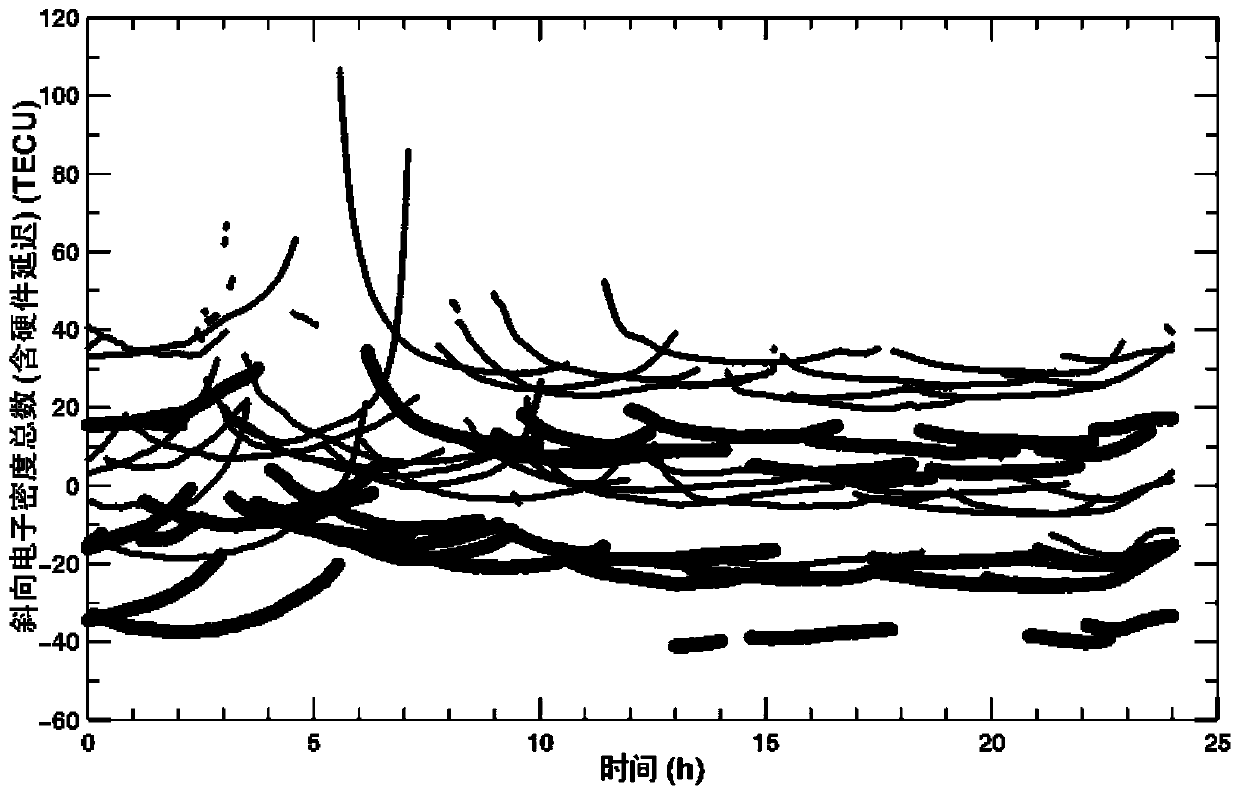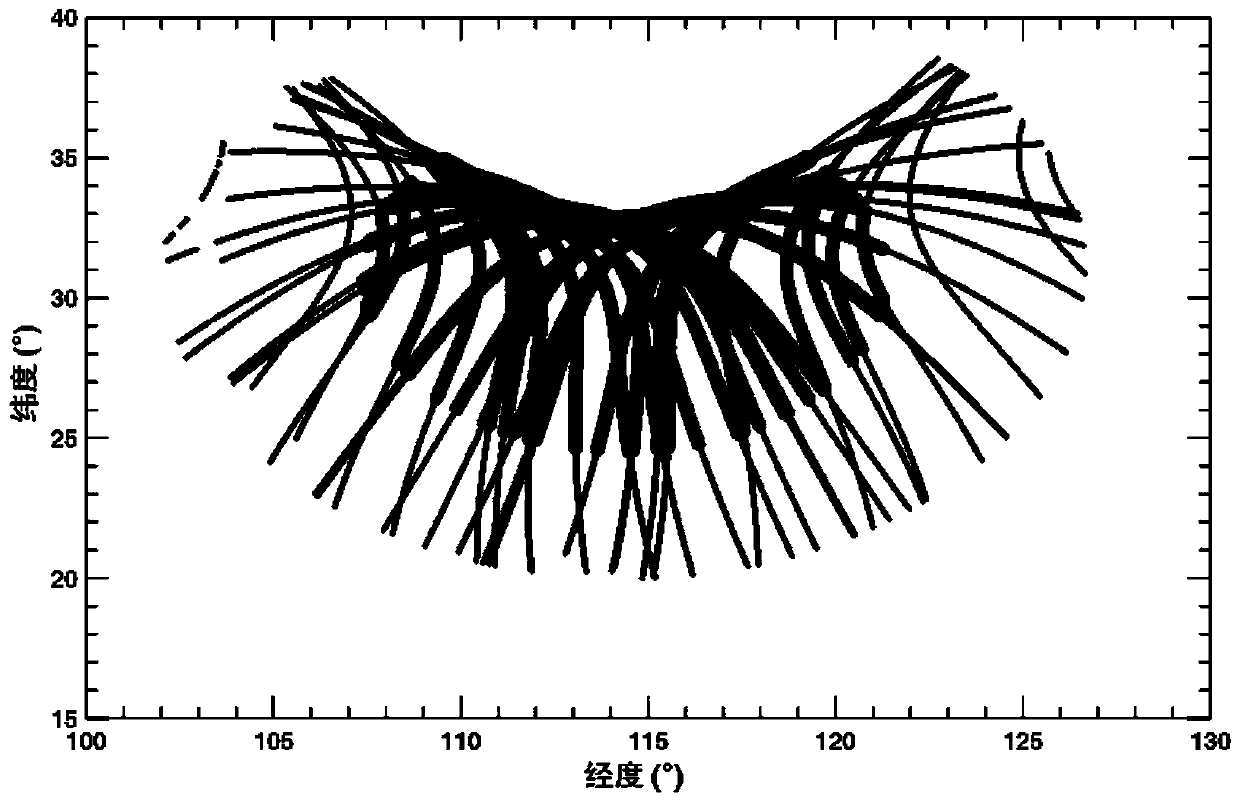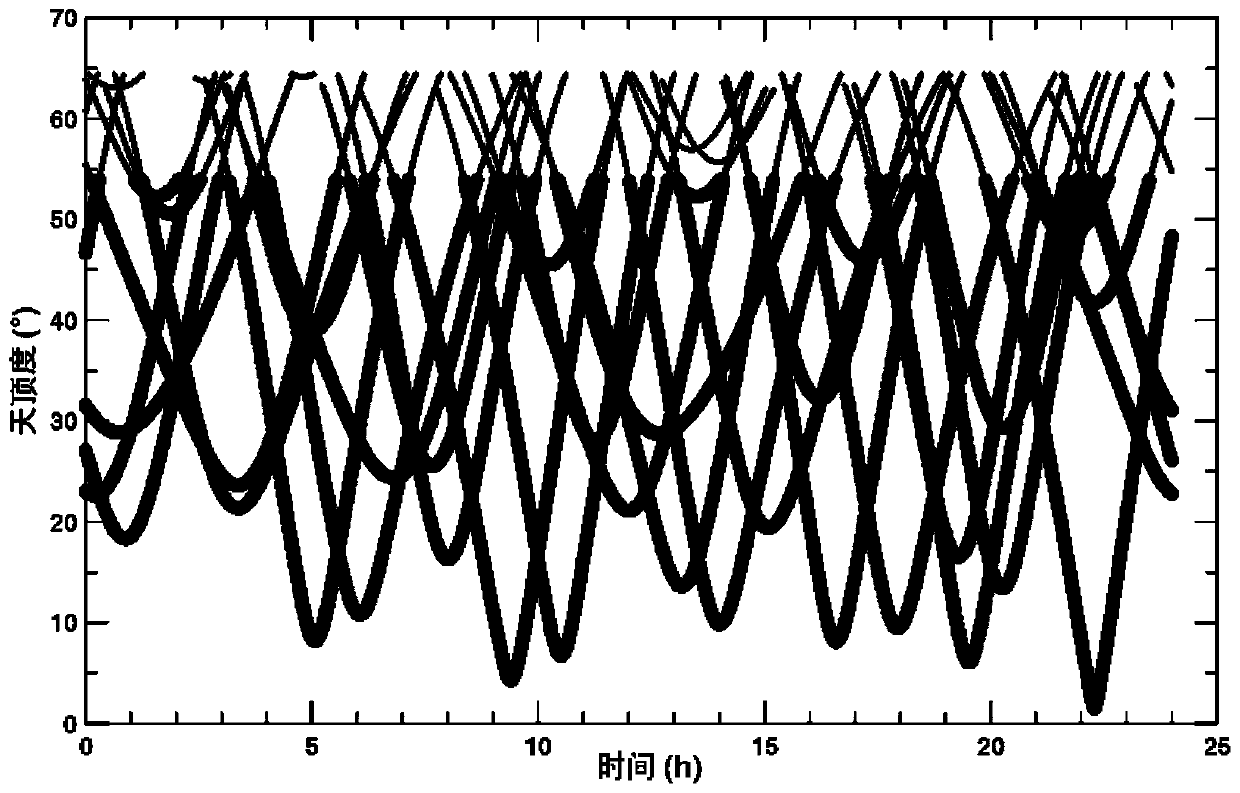A method and device for detecting the total number of ionospheric electron densities
A technology of electron density and ionosphere, applied in the direction of measuring devices, measuring electrical variables, instruments, etc., can solve the problems of insufficient single-station accuracy and difficult equipment maintenance, so as to avoid remote data transmission, convenient equipment maintenance, and high data space density Effect
- Summary
- Abstract
- Description
- Claims
- Application Information
AI Technical Summary
Problems solved by technology
Method used
Image
Examples
Embodiment 1
[0038] An embodiment of the present invention provides a method for detecting the total number of ionospheric electron densities, comprising the following steps:
[0039] Step S0, set up equipment and record data, set up two dual-frequency GPS receiver antennas 1 in the area to be tested, the distance between the two dual-frequency GPS receiver antennas 1 is about 10m, and connect to the corresponding Two dual-frequency GPS receivers 3 are connected with the same computer 5 through the communication cable 4, and the computer terminal control software of the dual-frequency GPS receiver 3 is used to control the two dual-frequency GPS receivers through the computer 5 Receiver 3 records data, and preserve in computer 5, wherein, described data comprises: GPS satellite ephemeris data, time, dual-frequency GPS receiver antenna 1 position, GPS satellite P1 code phase and pseudo-range and signal-to-noise ratio, P2 code phase, pseudorange and signal-to-noise ratio;
[0040] It should ...
Embodiment 2
[0066] It should be noted that this embodiment 2 is a device embodiment, and it belongs to the same technical concept of the invention as the above-mentioned method embodiment 1. Please refer to the method embodiment 1 for the content not described in detail in this embodiment.
[0067] In this example, if Figure 6 As shown, the device for applying the method for detecting the total number of ionospheric electron densities above includes: including two dual-frequency GPS receiver antennas 1 for receiving GPS satellite signals, two coaxial cables 2 and two dual-frequency GPS receivers The two dual-frequency GPS receivers 3 connected to the antenna 1, and the same computer 5 connected to the two dual-frequency GPS receivers 3 through the communication cable 4.
PUM
 Login to View More
Login to View More Abstract
Description
Claims
Application Information
 Login to View More
Login to View More - R&D
- Intellectual Property
- Life Sciences
- Materials
- Tech Scout
- Unparalleled Data Quality
- Higher Quality Content
- 60% Fewer Hallucinations
Browse by: Latest US Patents, China's latest patents, Technical Efficacy Thesaurus, Application Domain, Technology Topic, Popular Technical Reports.
© 2025 PatSnap. All rights reserved.Legal|Privacy policy|Modern Slavery Act Transparency Statement|Sitemap|About US| Contact US: help@patsnap.com



